- 1力扣62-不同路径(动态规划,递归,数学公式多方法比较 Java题解)_力扣不同路径
- 2数据库中的算法实现_数据库算法实现
- 3VSCode学习笔记No.3_vscode 关闭代理
- 42023年十款开源测试开发工具推荐!_开源测试工具
- 5适用于电脑的 8 款文件-软件迁移软件 – 快速安全地更换电脑!_局域网文件传输工具
- 6python练习题(1)--顺序程序设计_已知变量string=' python
- 73-5、以太坊在本地私有链创建节点,新增节点,节点间的同步,详细篇(黄金篇)?_eth新加入节点同步数据
- 8【SPIE独立出版 | EI&Scopus检索 | 往届均已见刊检索】第三届高级算法与信号图像处理国际会议AASIP2023_spie出版社
- 92021秋招-算法-BFS-DFS_秋招算法 dfs-bfs
- 10区块链溯源技术的应用:区块链溯源在零售业中的应用_区块链 溯源
英特尔oneAPI人工智能黑客松 - 活动又来啦
赞
踩
写在前面:博主是一只经过实战开发历练后投身培训事业的“小山猪”,昵称取自动画片《狮子王》中的“彭彭”,总是以乐观、积极的心态对待周边的事物。本人的技术路线从Java全栈工程师一路奔向大数据开发、数据挖掘领域,如今终有小成,愿将昔日所获与大家交流一二,希望对学习路上的你有所助益。同时,博主也想通过此次尝试打造一个完善的技术图书馆,任何与文章技术点有关的异常、错误、注意事项均会在末尾列出,欢迎大家通过各种方式提供素材。
- 对于文章中出现的任何错误请大家批评指出,一定及时修改。
- 有任何想要讨论和学习的问题可联系我:zhuyc@vip.163.com。
- 发布文章的风格因专栏而异,均自成体系,不足之处请大家指正。
英特尔oneAPI人工智能黑客松 - 活动又来啦
本文关键字:英特尔、oneAPI、人工智能、机器视觉
一、活动介绍

经过几次福利满满的活动,英特尔和C站官方再次联合举办了oneAPI的人工智能黑客松活动,也就是使用英特尔的官方套件去解决一些计算机视觉领域的问题,活动分为3个赛道:
- 计算机视觉挑战:检测并清除杂草
- 机器学习:预测淡水质量
- oneAPI开放创新:使用oneAPI人工智能分析工具包实现任何创意

活动主办方提供了源码案例以及公开课视频教程,并且整体的实现流程也描述的十分清楚,可以方便大家快速上手。笔者虽然一直在人工智能领域工作,但是在机器视觉方面还是接触的比较少,但是查看了相关资料后也能在比较短的时间内实现自己的构想,并且感觉自己也get了新技能,不得不由衷点个赞!
二、环境准备
1. 硬件要求
因为是基于英特尔的套件进行机器视觉方面的工作,所以会用到CPU个GPU资源,需要在Intel的机器上进行开发。当然,如果没有合适的机器,也可以使用官方提供的云环境,小编也是尝试了一下,可以免费申请到半年的使用权,并且配置并不低,可以说是十分良心了。
2. 软件环境
如果想要尽快开始,只需要自行安装一些基础的python环境,能够构建官方的案例即可:https://github.com/idz-cn/2023hackathon/tree/main/computer-vision-track
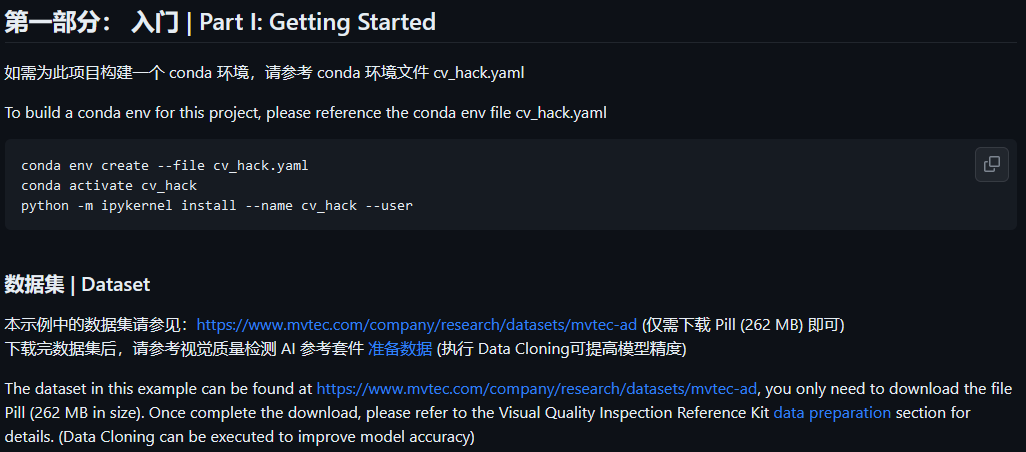
我们可以参考相关的代码,并且可以下载到需要的数据集:https://www.mvtec.com/company/research/datasets/mvtec-ad,里面包含了很多场景的训练图片,可以直接使用。
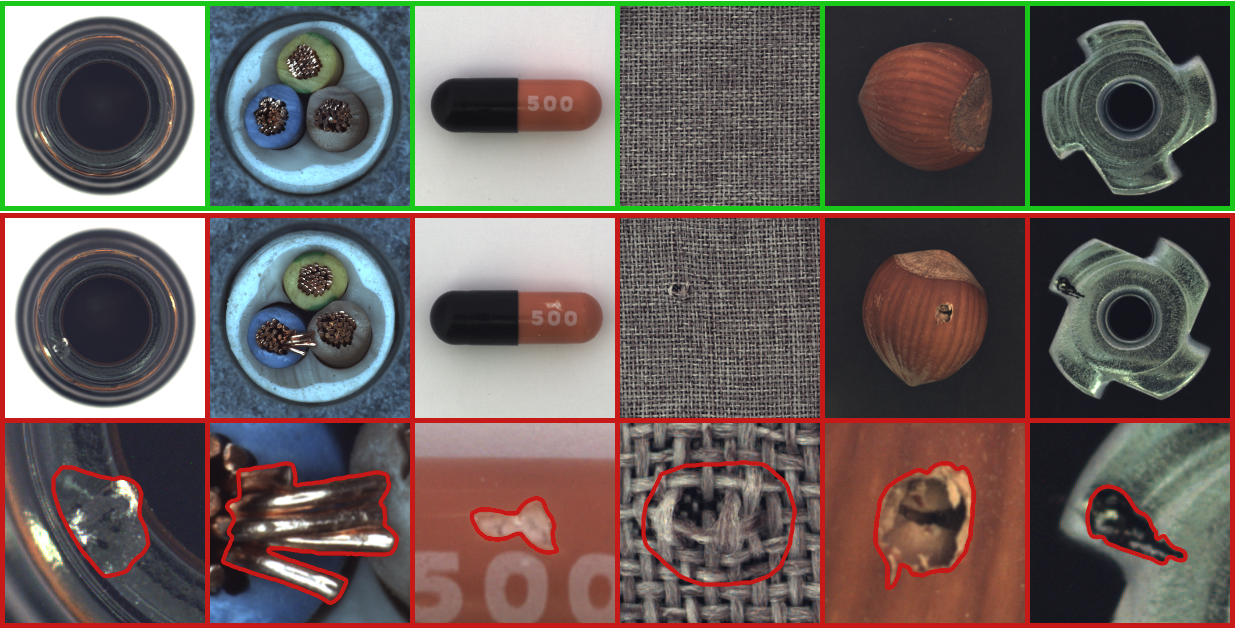
三、方案实现
笔者使用的数据集是cable,也就是电缆切面。我们可以通过训练学习让模型知道什么样的情况是合格的,而什么样的是不合规的。以下将列出部分代码和步骤,详细的可以参考官方案例:
1. 数据集准备
首先要准备好训练集 - train和测试集 - test,并且两者都需要挑选出可以被认可的 - good和不被认可的 - bad,这些图片我们可以从数据集中手动跳转,也可以随机抽取几张,或者参考案例中的数据准备步骤:https://github.com/oneapi-src/visual-quality-inspection#2-data-preparation。
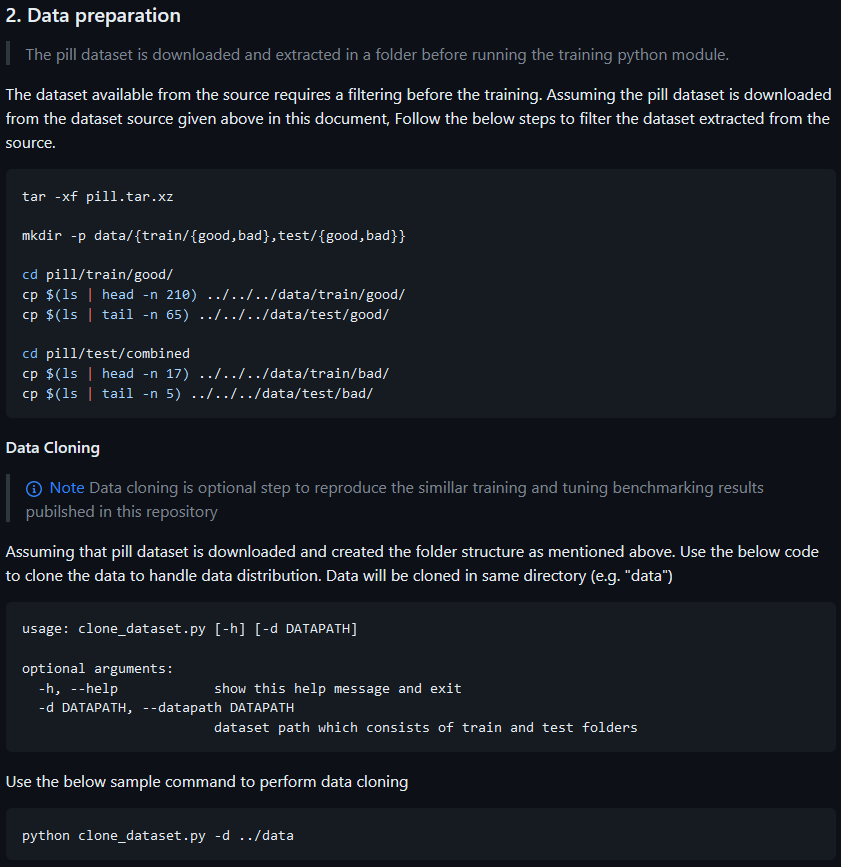
2. 训练和预测
- 对比显示两组图片
在模型训练阶段,我们先从训练集中抽取一些图片来做对比显示:
import cv2 train_dir = './data/train' # image folder # get the list of jpegs from sub image class folders good_imgs = [fn for fn in os.listdir(f'{train_dir}/good') if fn.endswith('.png')] bad_imgs = [fn for fn in os.listdir(f'{train_dir}/bad') if fn.endswith('.png')] # randomly select 3 of each select_norm = np.random.choice(good_imgs, 3, replace = False) select_pneu = np.random.choice(bad_imgs, 3, replace = False) # plotting 2 x 3 image matrix fig = plt.figure(figsize = (10,10)) for i in range(6): if i < 3: fp = f'{train_dir}/good/{select_norm[i]}' label = 'Acceptable Cable' else: fp = f'{train_dir}/bad/{select_pneu[i-3]}' label = 'Defective Cable' ax = fig.add_subplot(2, 3, i+1) # to plot without rescaling, remove target_size fn = cv2.imread(fp) fn_gray = cv2.cvtColor(fn, cv2.COLOR_BGR2GRAY) plt.imshow(fn, cmap='Greys_r') plt.title(label) plt.axis('off') plt.show()
- 1
- 2
- 3
- 4
- 5
- 6
- 7
- 8
- 9
- 10
- 11
- 12
- 13
- 14
- 15
- 16
- 17
- 18
- 19
- 20
- 21
- 22
- 23
- 24
- 25
- 26
- 27
- 28
- 29
- 30
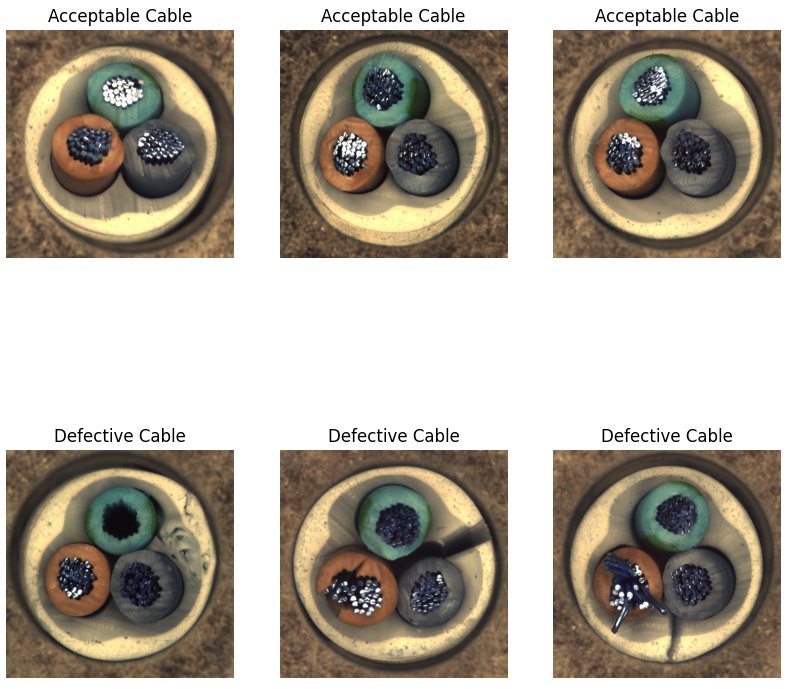
- 接下来需要将图片以数据的形式读取,也就是矩阵或数组的形式
# making n X m matrix def img2np(path, list_of_filename, size = (64, 64)): # iterating through each file for fn in list_of_filename: fp = path + fn current_image = cv2.imread(fp) current_image = cv2.cvtColor(current_image, cv2.COLOR_BGR2GRAY) # turn that into a vector / 1D array img_ts = [current_image.ravel()] try: # concatenate different images full_mat = np.concatenate((full_mat, img_ts)) except UnboundLocalError: # if not assigned yet, assign one full_mat = img_ts return full_mat # run it on our folders good_images = img2np(f'{train_dir}/good/', good_imgs) bad_images = img2np(f'{train_dir}/bad/', bad_imgs) def find_stat_img(full_mat, title, size = (1024, 1024)): # calculate the average mean_img = np.mean(full_mat, axis = 0) mean_img = mean_img.reshape(size) var_img = np.var(full_mat, axis = 0) var_img = var_img.reshape(size) max_img = np.amax(full_mat, axis = 0) max_img = max_img.reshape(size) min_img = np.amin(full_mat, axis = 0) min_img = min_img.reshape(size) figure, (ax1, ax2, ax3, ax4) = plt.subplots(1, 4, sharey=True, figsize=(15, 15)) ax1.imshow(var_img, vmin=0, vmax=255, cmap='Greys_r') ax1.set_title(f'Variance {title}') ax2.imshow(mean_img, vmin=0, vmax=255, cmap='Greys_r') ax2.set_title(f'Average {title}') ax3.imshow(max_img, vmin=0, vmax=255, cmap='Greys_r') ax3.set_title(f'Max {title}') ax4.imshow(min_img, vmin=0, vmax=255, cmap='Greys_r') ax4.set_title(f'Min {title}') plt.show() return mean_img, var_img
- 1
- 2
- 3
- 4
- 5
- 6
- 7
- 8
- 9
- 10
- 11
- 12
- 13
- 14
- 15
- 16
- 17
- 18
- 19
- 20
- 21
- 22
- 23
- 24
- 25
- 26
- 27
- 28
- 29
- 30
- 31
- 32
- 33
- 34
- 35
- 36
- 37
- 38
- 39
- 40
- 41
- 42
- 43
- 44
此处的传参需要根据图片尺寸来调整,这里可以看到简单分析后的效果:

- 模型定义
接下来进行模型的定义,这里直接引用了官方代码:
class CustomVGG(nn.Module): def __init__(self, n_classes=2): super().__init__() self.feature_extractor = models.vgg16(pretrained=True).features[:-1] self.classification_head = nn.Sequential( nn.MaxPool2d(kernel_size=2, stride=2), nn.AvgPool2d( kernel_size=(INPUT_IMG_SIZE[0] // 2 ** 5, INPUT_IMG_SIZE[1] // 2 ** 5) ), nn.Flatten(), nn.Linear( in_features=self.feature_extractor[-2].out_channels, out_features=n_classes, ), ) self._freeze_params() def _freeze_params(self): for param in self.feature_extractor[:23].parameters(): param.requires_grad = False def forward(self, x_in): """ forward """ feature_maps = self.feature_extractor(x_in) scores = self.classification_head(feature_maps) if self.training: return scores probs = nn.functional.softmax(scores, dim=-1) weights = self.classification_head[3].weight weights = ( weights.unsqueeze(-1) .unsqueeze(-1) .unsqueeze(0) .repeat( ( x_in.size(0), 1, 1, INPUT_IMG_SIZE[0] // 2 ** 4, INPUT_IMG_SIZE[0] // 2 ** 4, ) ) ) feature_maps = feature_maps.unsqueeze(1).repeat((1, probs.size(1), 1, 1, 1)) location = torch.mul(weights, feature_maps).sum(axis=2) location = F.interpolate(location, size=INPUT_IMG_SIZE, mode="bilinear") maxs, _ = location.max(dim=-1, keepdim=True) maxs, _ = maxs.max(dim=-2, keepdim=True) mins, _ = location.min(dim=-1, keepdim=True) mins, _ = mins.min(dim=-2, keepdim=True) norm_location = (location - mins) / (maxs - mins) return probs, norm_location
- 1
- 2
- 3
- 4
- 5
- 6
- 7
- 8
- 9
- 10
- 11
- 12
- 13
- 14
- 15
- 16
- 17
- 18
- 19
- 20
- 21
- 22
- 23
- 24
- 25
- 26
- 27
- 28
- 29
- 30
- 31
- 32
- 33
- 34
- 35
- 36
- 37
- 38
- 39
- 40
- 41
- 42
- 43
- 44
- 45
- 46
- 47
- 48
- 49
- 50
- 51
- 52
- 53
- 54
- 55
- 56
- 57
- 58
- 59
- 60
接下来需要不断的反复调整参数,来查看模型的表现,此处略去。
- 模型训练
根据定义好的参数训练模型,然后使用测试集查看具体表现。
# model training starts # Model Training # Intitalization of DL architechture along with optimizer and loss function model = CustomVGG() class_weight = torch.tensor(class_weight).type(torch.FloatTensor).to(DEVICE) criterion = nn.CrossEntropyLoss(weight=class_weight) optimizer = optim.Adam(model.parameters(), lr=LR) # Ipex Optimization model, optimizer = ipex.optimize(model=model, optimizer=optimizer, dtype=torch.float32) # Training module start_time = time.time() trained_model = train(train_loader, model=model, optimizer=optimizer, criterion=criterion, epochs=EPOCHS, device=DEVICE, target_accuracy=TARGET_TRAINING_ACCURACY) train_time = time.time()-start_time # Save weights model_path = f"{subset_name}.pt" torch.save(trained_model.state_dict(), model_path)
- 1
- 2
- 3
- 4
- 5
- 6
- 7
- 8
- 9
- 10
- 11
- 12
- 13
- 14
- 15
- 16
- 17
- 18
- 19
- 20
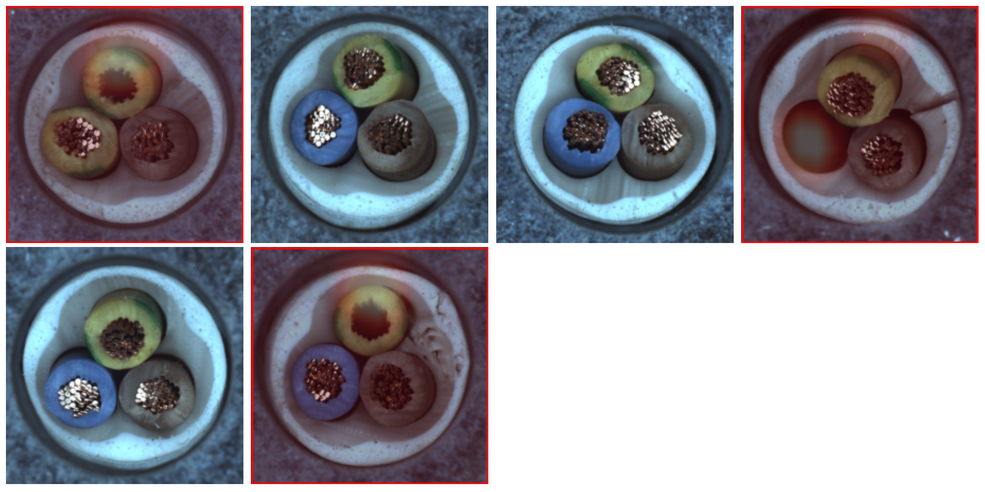
3. 评估和量化
- 模型评估
评估一个模型有多个指标,可以使用evaluate等方法查看。
y_true, y_pred = evaluate(trained_model, test_loader, DEVICE, labels=True)
- 1
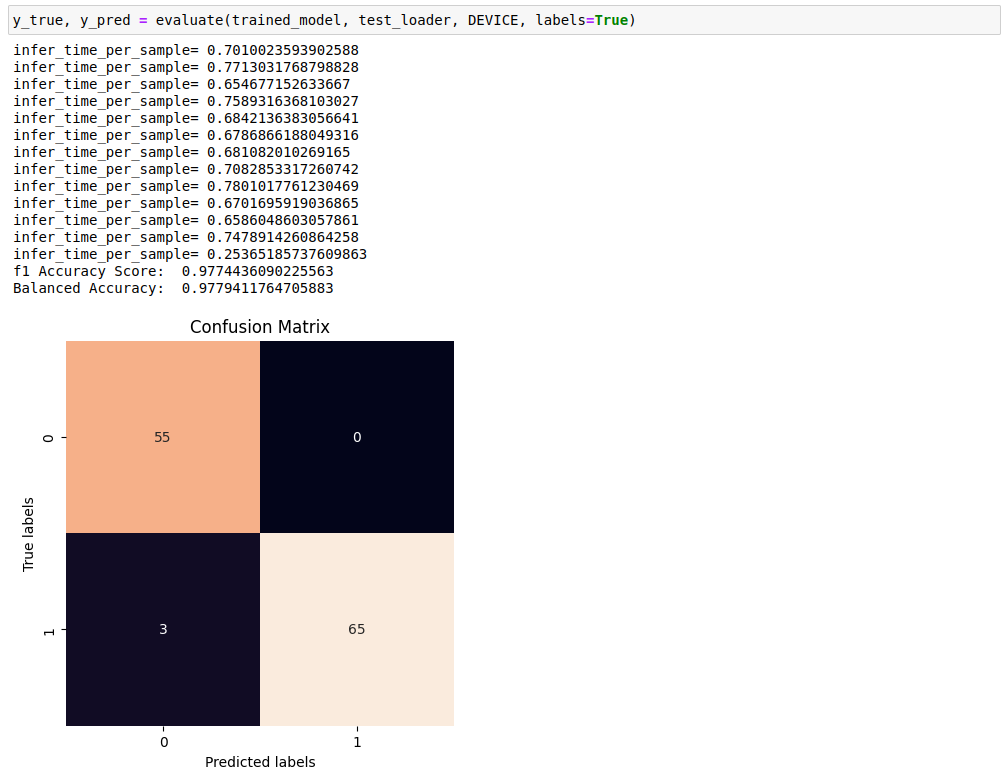
- 模型量化
在模型训练完成后,可以将其量化导出,这样通过十分简短的代码就可以调用。
from neural_compressor.config import PostTrainingQuantConfig, AccuracyCriterion, TuningCriterion from neural_compressor import quantization # INC will not quantize some layers optimized by ipex, such as _IPEXConv2d, # so we need to create original model object and load trained weights model = CustomVGG() model.load_state_dict(torch.load(model_path)) model.to(DEVICE) model.eval() # define evaluation function used by INC def eval_func(model): with torch.no_grad(): y_true = np.empty(shape=(0,)) y_pred = np.empty(shape=(0,)) for inputs, labels in train_loader: inputs = inputs.to(DEVICE) labels = labels.to(DEVICE) preds_probs = model(inputs)[0] preds_class = torch.argmax(preds_probs, dim=-1) labels = labels.to("cpu").numpy() preds_class = preds_class.detach().to("cpu").numpy() y_true = np.concatenate((y_true, labels)) y_pred = np.concatenate((y_pred, preds_class)) return accuracy_score(y_true, y_pred) # quantize model conf = PostTrainingQuantConfig(backend='ipex', accuracy_criterion = AccuracyCriterion( higher_is_better=True, criterion='relative', tolerable_loss=0.01)) q_model = quantization.fit(model, conf, calib_dataloader=train_loader, eval_func=eval_func) # save quantized model # you can also find a json file saved with quantized model, which saved quantization information for each operator quantized_model_path = './quantized_models' if not os.path.exists(quantized_model_path): os.makedirs(quantized_model_path) q_model.save(quantized_model_path)
- 1
- 2
- 3
- 4
- 5
- 6
- 7
- 8
- 9
- 10
- 11
- 12
- 13
- 14
- 15
- 16
- 17
- 18
- 19
- 20
- 21
- 22
- 23
- 24
- 25
- 26
- 27
- 28
- 29
- 30
- 31
- 32
- 33
- 34
- 35
- 36
- 37
- 38
- 39
- 40
- 41
- 42
- 43
- 44
- 45
- 46
- 模型预测
从指定路径加载模型后就可以开始预测:
q_model.to(DEVICE)
q_model.eval()
q_model = ipex.optimize(q_model)
y_true, y_pred = evaluate(q_model, test_loader, DEVICE, labels=True)
- 1
- 2
- 3
- 4
- 5




